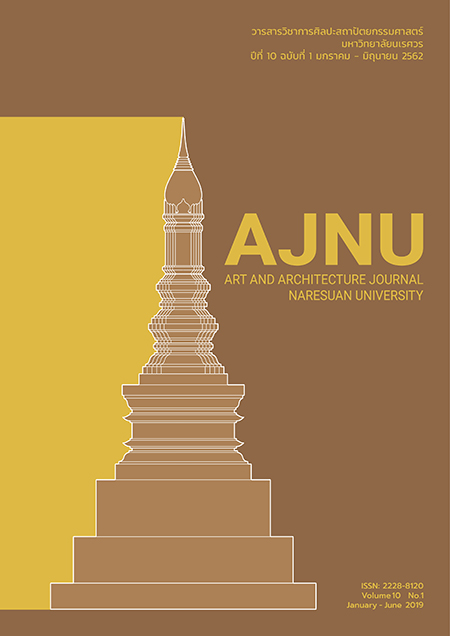The Development of Nguyen Royal Mausoleums, Hue, Vietnam: From the beginning of the Dynasty to the political change
Main Article Content
Abstract
This article presents the development of the complex of Hue’s emperor tombs in Vietnam. The emperor tombs are studied simultaneously with the study of the history of Vietnam during that time. The conclusion of this study pointed out that the emperor tombs in the first period of Nguyen dynasty were influenced from Chinese culture. These tombs had developed the complexity in design depending on the country’s stability in each period of times. In the late period of the dynasty before the converting of political regime from feudalism to socialism, Vietnam was under the political influenced of France. With that pressure expressed troughs the changing of design of the last 2 emperor tombs which accepted the western culture to be part of the tomb’s design, these included the changing of materials, exterior, and interior decoration. The altering of emperor tombs’ layout until the end of feudal period shown the attempt to negotiate with the pressure of the Western. At the end, however, this attempt was not succeed and the feudal was collapsed in the end.
Article Details
References
Nguyen Viet Ke. (2014). Stories of The Nguyen Dynasty's Kings. Da Nang, Vietnam: Da Nang Publishing House.
Phan Thuan An. (2014). Royal Mausoleums in Hue-A wonder. Da Nang, Vietnam: Da Nang Publishing House.
Safeguarding Cultural Heritage An Dinh Palais, Hué, Vietnam. (January 2018). เข้าถึงได้จาก Safeguarding Cultural Heritage An Dinh Palais, Hué, Vietnam: https://tvtn.free.fr/bio/cung%20an%20dinh/history.php.htm
Somchart Chungsiriarak. (2010). The western architecture in Siam. Bangkok: Amrin Printing and Publishing.
Vu Hong Lien. (2015). Royal Hue, Heritage of the Nguyen Dynasty of Vietnam. Bangkok, Thailand: Bangkok printing Co., Ltd.


